Beginners Guides
How To Get A Tiny House From Tiny House Nation
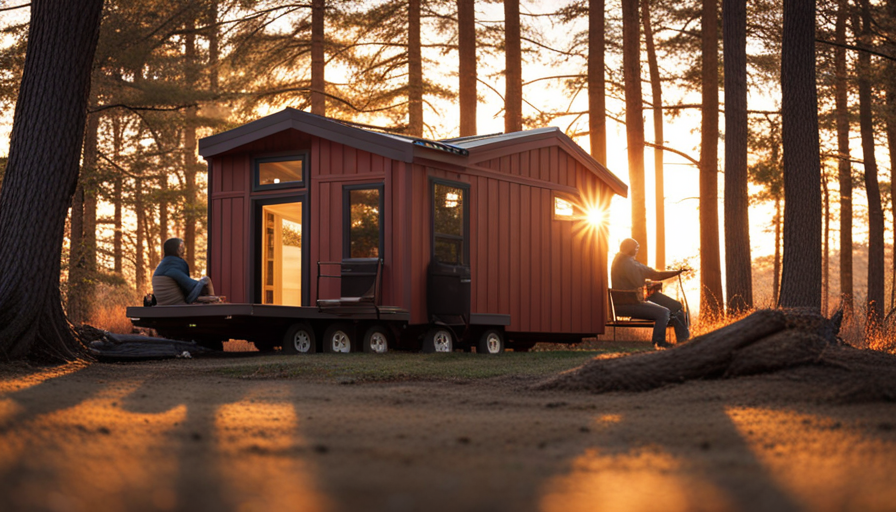
Have you ever considered acquiring one of those charming little homes featured on the hit series ‘Tiny House Nation’? I want to assure you that it’s easier than it appears! Indeed, with some preparation and investigation, the goal of residing in a tiny house can indeed become your reality.
In this article, I will guide you through the process of getting a tiny house from ‘Tiny House Nation’, step by step. We will explore the benefits of tiny living, find inspiration from the show, determine your budget and financing options, choose the perfect design for your lifestyle, find land and secure a location, furnish and decorate your tiny house, embrace minimalism and downsizing, join the tiny house community, and finally, enjoy the incredible benefits of tiny house living.
So, let’s get started on this exciting journey towards a simpler, more sustainable way of life!
Key Takeaways
- Planning and research can make your dream of living in a tiny house a reality
- Tiny houses reduce carbon footprint and promote sustainable lifestyle
- Tiny living significantly reduces housing costs and allows for saving money or investing in experiences
- ‘Tiny House Nation’ provides inspiration for downsizing and creating dream home
Explore the Benefits of Tiny Living
Discover the incredible perks of tiny living and prepare to be amazed by the freedom and simplicity it brings. The benefits of downsizing to a tiny house are numerous.
Firstly, it allows you to reduce your carbon footprint and live a more sustainable lifestyle. Tiny houses are designed to be energy efficient, using less electricity and water compared to traditional homes.
Additionally, the smaller space encourages you to declutter and prioritize what truly matters, leading to a more minimalist and organized life.
Financially, tiny living can be a game-changer, as it significantly reduces your housing costs and allows you to save money or invest in experiences and adventures.
Overall, living in a tiny house offers a unique sense of freedom and independence, allowing you to live life on your own terms.
So, let’s find inspiration from ‘Tiny House Nation’ and embark on this incredible journey.
Find Inspiration from ‘Tiny House Nation’
Explore the endless possibilities of downsizing and creating your dream home by drawing inspiration from the captivating series ‘Tiny House Nation’.
This show features a wide range of tiny house design ideas that will leave you in awe. From innovative space-saving solutions to creative storage ideas, ‘Tiny House Nation’ showcases the best of small living.
Whether you’re looking for a rustic cabin feel or a modern minimalist design, this show has something for everyone. Additionally, ‘Tiny House Nation’ also provides valuable information about the different types of tiny house building materials available, helping you make informed decisions when it comes to constructing your own tiny home.
So, let’s dive into the world of tiny houses and discover the design ideas and building materials that will transform your dreams into reality.
Now, let’s move on to determining your budget and financing options for your tiny house adventure.
Determine Your Budget and Financing Options
To truly embark on your journey towards a dream haven of downsized living, it’s time to assess the financial aspects and find the perfect means to make your tiny house aspirations a reality. When determining your budget and exploring financing options, consider the following:
- Research different lenders and loan programs specifically tailored for tiny houses.
- Calculate your monthly expenses and income to determine how much you can afford to spend on your tiny house.
- Save up for a down payment to reduce your overall loan amount.
- Consider alternative financing options like personal loans or crowdfunding.
- Explore grants or subsidies that may be available for eco-friendly or affordable housing projects.
By carefully evaluating your financial situation and exploring various financing options, you can ensure that your tiny house project stays within your means. Once you have your budget sorted, it’s time to choose the perfect design for your lifestyle.
Choose the Perfect Design for Your Lifestyle
Once you’ve determined your budget and financing options, it’s time to find the ideal design that perfectly suits your lifestyle and brings joy to your tiny haven.
When it comes to tiny house design trends, there are endless possibilities to explore. From sleek and modern to cozy and rustic, you can choose a style that reflects your personality and preferences.
Customizing your tiny house is key to creating a space that meets your unique needs. Consider factors like the number of bedrooms, kitchen layout, storage solutions, and overall functionality.
Don’t forget to think about the specific features that’ll enhance your daily life, such as a built-in workspace or a multipurpose loft area.
As you finalize the design, keep in mind the importance of maximizing space and optimizing functionality.
With the perfect design in mind, you can now move forward to the next step of finding land and securing a location.
Find Land and Secure a Location
When it comes to finding land for my tiny house, I know that researching zoning laws and regulations is crucial. Understanding the rules and restrictions in the area can help me find a suitable location that complies with the regulations.
Additionally, I’m considering whether to buy or rent land for my tiny house. Both options have their advantages and disadvantages. By carefully considering these factors, I can ensure that I secure a location that’s both legal and convenient for my tiny house lifestyle.
Research Zoning Laws and Regulations
Start by checking out the local regulations and guidelines for zoning laws in your area to ensure a smooth process in acquiring your tiny house from Tiny House Nation.
To research zoning laws and regulations, here are four important things to consider:
-
Researching restrictions: Understand the specific restrictions and limitations imposed by your local zoning laws. This includes the minimum square footage requirements, setback rules, and restrictions on accessory dwellings.
-
Understanding permits: Determine the permits required for building, placing, and living in a tiny house. This may include building permits, occupancy permits, and permits for utilities such as water and electricity.
-
Consulting with local authorities: Reach out to your local planning department or zoning board to clarify any questions or concerns you may have. They can provide valuable information on what is allowed and guide you through the process.
-
Seeking legal advice if needed: If you encounter complex zoning regulations or face challenges in obtaining permits, it may be beneficial to consult with a lawyer who specializes in zoning laws.
Once you have thoroughly researched zoning laws and regulations, you can consider buying or renting land for your tiny house, ensuring that it complies with the local requirements.
Consider Buying or Renting Land for Your Tiny House
If you’re interested in owning a tiny house, consider purchasing or renting land that meets the local requirements for zoning and permits. This will ensure that you can legally place your tiny house on the property. When it comes to buying options, you may choose to purchase land outright or finance it through a mortgage. Renting land is another option that allows for more flexibility, as you can easily move your tiny house to a different location if desired.
To help you weigh the pros and cons of each option, here is a table summarizing the main considerations:
| Buying Land | Renting Land |
|---|---|
| Long-term investment | Greater flexibility |
| Potential for appreciation | Limited control over the property |
| More responsibility for maintenance | Lower upfront costs |
Once you have decided on the best land option for your tiny house, you can then navigate the construction process and bring your dream home to life.
Navigate the Construction Process
To successfully navigate the construction process of your tiny house, you’ll need to prioritize communication and actively collaborate with the builders. It’s important to explore eco-friendly materials for your tiny house to ensure sustainability and minimize your environmental impact. Consider using recycled, reclaimed, or renewable materials whenever possible.
Additionally, understanding the construction timeline is crucial. Work closely with the builders to establish a clear schedule and ensure that all necessary permits and inspections are obtained in a timely manner. Regularly communicate with the construction team to address any concerns or changes that may arise during the process. By actively participating in the construction process, you can ensure that your vision for your tiny house is realized.
Next, we’ll discuss how to furnish and decorate your tiny house to maximize space and create a cozy, functional living environment.
Furnish and Decorate Your Tiny House
When it comes to furnishing and decorating my tiny house, I always prioritize optimizing space with multifunctional furniture. This allows me to make the most out of every square inch and ensures that each piece serves multiple purposes.
In addition, I incorporate various storage solutions to keep my tiny house organized and clutter-free. From built-in shelves and cabinets to creative storage hacks, finding ways to maximize storage space is essential in a small living environment.
Optimize Space with Multifunctional Furniture
Maximize your space by incorporating multifunctional furniture that can transform from a cozy bed into a stylish sofa with just a flick of your wrist. Multifunctional furniture trends are gaining popularity as people look for ways to maximize space in small homes.
Here are three innovative pieces that can help you make the most of your tiny house:
-
Convertible Coffee Table: This clever piece of furniture can serve as a coffee table during the day and transform into a dining table for dinner parties. It’s a great way to save space without compromising on functionality.
-
Wall Bed with Storage: A wall bed is a fantastic space-saving solution, and when it comes with built-in storage, it’s even better. This multifunctional furniture piece allows you to have a comfortable bed at night and ample storage space during the day.
-
Folding Desk: A folding desk is perfect for those who work from home or need a dedicated study area. It can be easily folded away when not in use, freeing up valuable floor space.
Optimizing space with multifunctional furniture is just the first step. In the next section, we’ll explore how to incorporate storage solutions for organization.
Incorporate Storage Solutions for Organization
When it comes to optimizing space in a tiny house, multifunctional furniture is just the beginning. To truly make the most of your limited square footage, incorporating smart storage solutions is key.
From hidden compartments to built-in shelving, there are countless ways to create a clutter-free and organized environment. Storage solutions for small spaces are all about utilizing vertical space, making use of walls and ceilings to maximize storage capacity.
By installing floating shelves, hanging organizers, and overhead cabinets, you can keep your belongings neatly stowed away without sacrificing valuable floor space. These storage solutions not only create a sense of order but also help create the illusion of a larger living area.
By embracing minimalism and downsizing, you can further enhance the functionality and coziness of your tiny house.
Embrace Minimalism and Downsizing
To fully embrace minimalism and downsize, it’s essential to prioritize what truly brings you joy and let go of unnecessary possessions. Studies have shown that the average American household contains over 300,000 items, so decluttering is a crucial step in the process.
Here are some benefits of downsizing:
- Increased freedom and flexibility
- Reduced financial burden
- More time for experiences and relationships
- Lower environmental impact
- Simplified cleaning and maintenance
To begin decluttering, start by tackling one area at a time and categorize items into keep, donate, or discard piles. Be ruthless in evaluating whether an item is truly necessary or brings you joy. Remember, less is more when it comes to living in a tiny house.
With a mindset focused on minimalism and downsizing, you can create a space that aligns with your values and priorities.
Now, let’s explore how you can join the tiny house community.
Join the Tiny House Community
Joining the tiny house community allows you to connect with like-minded individuals who share your passion for living simply and sustainably. Being a part of this community opens up opportunities to attend various tiny house community events where you can learn from others, get inspiration, and share your own experiences.
These events often include workshops, tours of different tiny houses, and discussions on topics such as off-grid living and sustainable design. Additionally, the tiny house community provides valuable resources that can help you in your journey towards tiny house living. From online forums and social media groups to websites dedicated to tiny house living, you can find a wealth of information, advice, and support from people who’ve already gone through the process.
By joining the tiny house community, you can truly immerse yourself in this lifestyle and enjoy the benefits of tiny house living, such as increased financial freedom and a smaller environmental footprint.
Enjoy the Benefits of Tiny House Living
Immerse yourself in the tiny house community and experience the freedom and sustainability that comes with living simply. Here are three benefits of downsizing and getting involved in the tiny house movement:
-
Financial Freedom: By living in a tiny house, you can significantly reduce your living expenses. You’ll have more money to spend on experiences and pursuing your passions with lower utility bills, less maintenance, and lower property taxes.
-
Environmental Sustainability: Tiny houses have a smaller carbon footprint compared to traditional homes. They require less energy to heat and cool, and their smaller size encourages a minimalist lifestyle, reducing waste and unnecessary consumption.
-
Strong Community Connections: Living in a tiny house community allows you to connect with like-minded individuals who share similar values. You can participate in community events, share resources, and build lasting friendships. The support and camaraderie within the tiny house community can enhance your overall well-being.
By embracing tiny house living and becoming part of the community, you can enjoy the many benefits of downsizing while fostering a sense of belonging and connection.
Frequently Asked Questions
What are the legal requirements for owning and living in a tiny house?
When it comes to owning and living in a tiny house, there are a few legal requirements to keep in mind. These requirements can vary depending on your location, but generally include obtaining the necessary permits and ensuring your tiny house complies with building codes and zoning regulations.
Financing a tiny house can be done through various options such as personal loans, RV loans, or even crowdfunding. Remember, it’s important to research and understand the legalities before embarking on your tiny house journey.
How do I find a builder or contractor to construct my tiny house?
To find a tiny house builder, start by researching local contractors who specialize in building tiny houses. Look for testimonials and reviews to ensure their credibility and quality of work.
Consider asking for recommendations from friends or online tiny house communities.
When hiring a contractor, make sure to thoroughly interview them, check their references, and review their portfolio. It’s also important to have clear communication about your budget, timeline, and specific design requirements.
Can I customize the design of my tiny house to fit my specific needs?
Absolutely not! Why would you want to customize the design of your tiny house to fit your specific needs? I mean, who needs a home that’s tailored to their lifestyle and preferences?
It’s much more fun to live in a cookie-cutter house that doesn’t meet your requirements at all. But if you insist on having a customized design that caters to your specific needs, then yes, you can definitely customize your tiny house to make it perfect for you.
Are there any specific zoning restrictions or regulations I should be aware of when choosing a location for my tiny house?
When choosing a location for my tiny house, it’s important to be aware of zoning restrictions and regulations that may affect where I can place it. Zoning restrictions vary by location and can dictate things like the minimum square footage, setbacks, and even whether a tiny house is allowed at all.
Additionally, I need to consider the location itself, such as access to utilities, proximity to amenities, and the overall suitability for my lifestyle.
How do I handle utilities such as water, electricity, and sewage in a tiny house?
When living in a tiny house, handling utilities like water, electricity, and sewage can be an exciting adventure in off-grid living. To ensure self-sufficiency, I rely on alternative energy sources such as solar panels and wind turbines.
Collecting rainwater and using composting toilets are sustainable solutions for water and sewage needs. By embracing these practices, I’m able to live a more environmentally friendly lifestyle while enjoying the freedom and simplicity of tiny house living.
Conclusion
As I reflect on the journey of getting a tiny house from ‘Tiny House Nation,’ I can’t help but feel like I’ve found my own little piece of paradise. It’s not just a house; it’s a sanctuary of simplicity and freedom.
From exploring the benefits of tiny living to finding the perfect design for my lifestyle, every step has been a transformative experience. Joining the tiny house community has opened my eyes to a world of like-minded individuals who understand the true meaning of living with less.
I’m now ready to embrace minimalism and enjoy the countless benefits of tiny house living.
Hi, I’m Emma. I’m the Editor in Chief of Tiny House 43, a blog all about tiny houses. While tree houses are often associated with childhood, they can be the perfect adult retreat. They offer a cozy space to relax and unwind, surrounded by nature. And since they’re typically built on stilts or raised platforms, they offer stunning views that traditional homes simply can’t match. If you’re looking for a unique and romantic getaway, a tree house tiny house might just be the perfect option.
Beginners Guides
How Do I Get Rid of Tiny White Bugs on My House Plants

- Health risks associated with tiny white bugs on house plants.
- Effective methods to prevent infestations of tiny white bugs on house plants
I am facing a small white insect issue with my indoor plants, and it is really frustrating me! These annoying bugs seem to be multiplying quickly, causing damage to my precious plants.
But fear not, my fellow plant enthusiasts, for I’ve done my research and found some effective solutions to eliminate these unwelcome guests.
In this article, I’ll share with you the knowledge and remedies I’ve discovered, so you too can reclaim your bug-free, thriving indoor garden.
Key Takeaways
- Aphids, mealybugs, and whiteflies are common types of tiny white bugs found on house plants.
- Lack of proper plant care, overwatering, and bringing infested plants indoors can lead to bug infestations.
- Homemade insecticides using water and dish soap or neem oil can suffocate and disrupt the feeding patterns of pests.
- Regular cleaning and inspection routines help detect and address pest issues early on.
Identifying the Tiny White Bugs on Your House Plants
I can easily spot the tiny white bugs on my house plants by carefully examining the leaves and stems. The most common species of these pests found on house plants are aphids, mealybugs, and whiteflies.
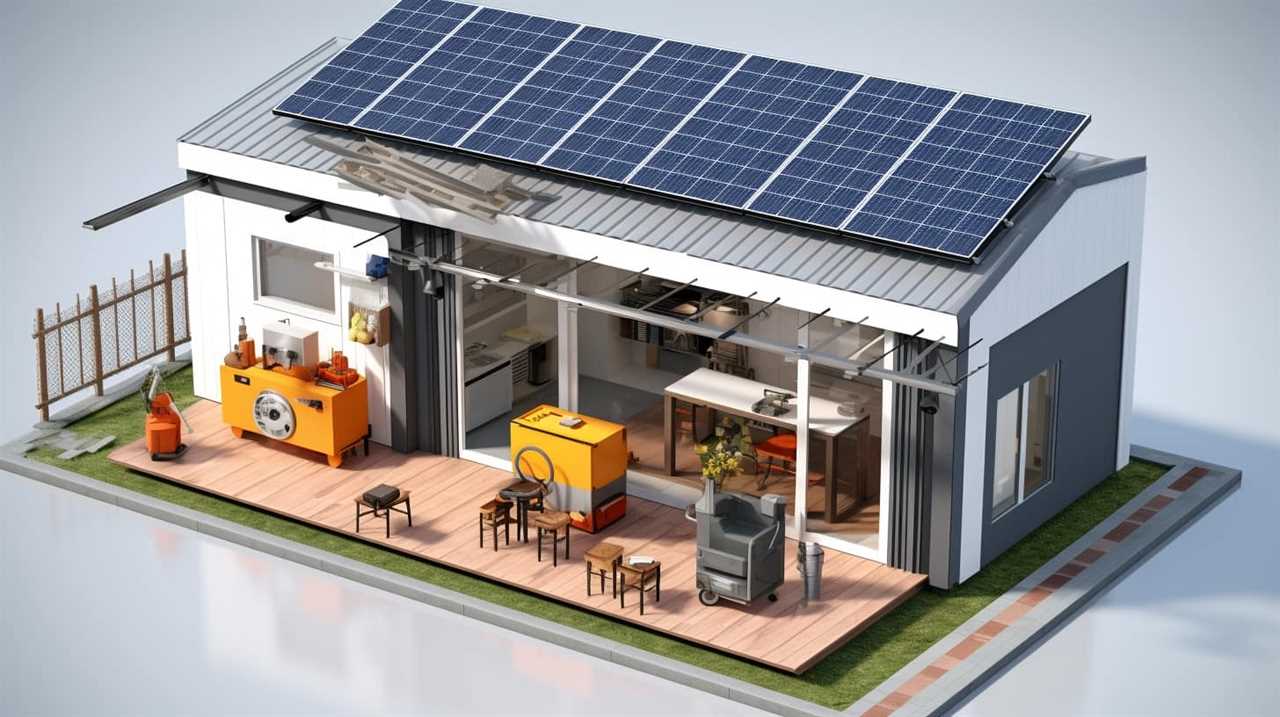
Aphids are small, pear-shaped insects that cluster on new leaves and buds.
Mealybugs are covered in a white, waxy substance and can be found on the undersides of leaves and in leaf axils.
Whiteflies, as the name suggests, are tiny white insects that fly around when disturbed.
An infestation of these tiny white bugs can cause significant damage to your house plants. Signs of infestation include yellowing leaves, stunted growth, distorted foliage, and a sticky residue called honeydew on the leaves. Furthermore, these pests can transmit plant diseases, weaken the plant’s immune system, and attract other pests.
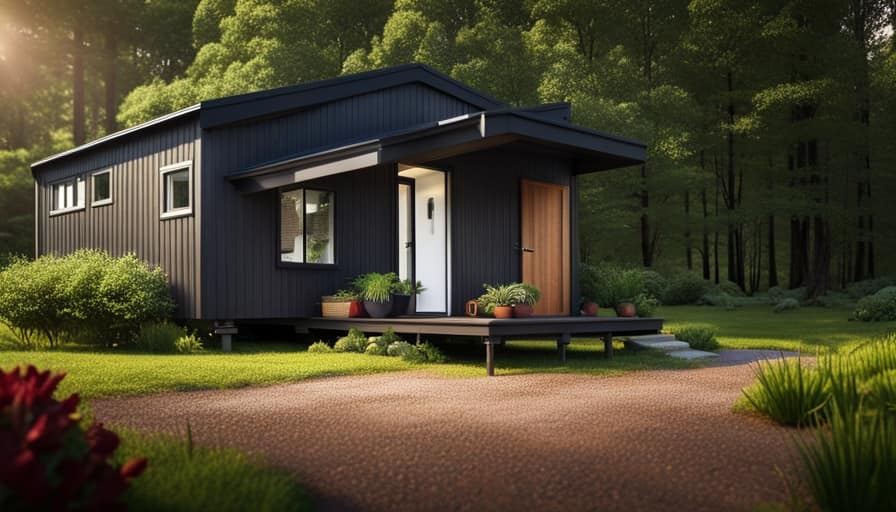
Understanding the causes of infestation is crucial in effectively getting rid of these tiny white bugs on your house plants.
Understanding the Causes of Infestation
Understanding the causes of infestation is essential in effectively eliminating these tiny white bugs on my house plants. Here are a few key factors to consider:
- Lack of proper plant care: Neglecting to provide adequate water, sunlight, and nutrients can weaken plants, making them more susceptible to bug infestations.
- Overwatering: Excessive moisture can create a favorable environment for pests like aphids and mealybugs.
- Bringing infested plants indoors: Introducing plants from outside without proper inspection can bring unwanted bugs into your home.
Recognizing the signs of bug damage is crucial for preventing infestation. Look out for yellowing, wilting leaves, sticky residue on leaves and stems, and tiny white bugs crawling on the plant’s surface.
Now that we understand the causes of infestation, let’s explore natural remedies to eliminate these pesky bugs.
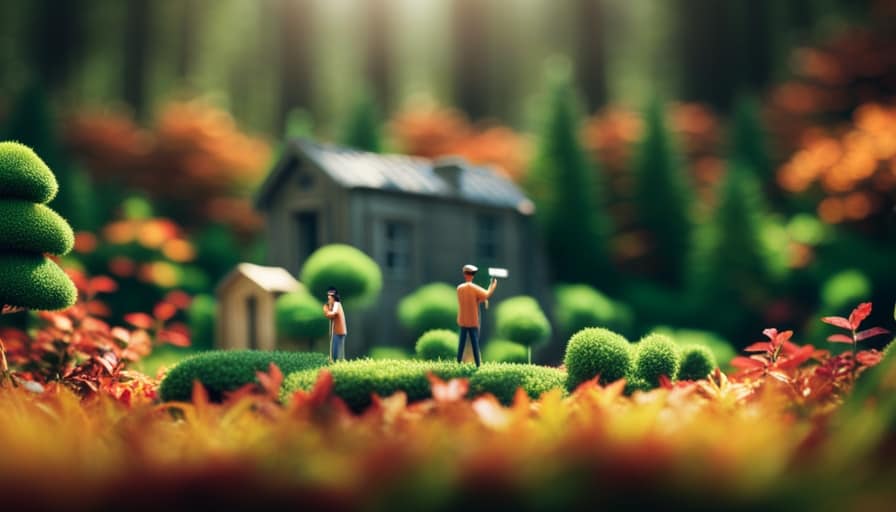
Natural Remedies to Eliminate the Bugs
To effectively get rid of these tiny white bugs on my house plants, I’ll need to rely on natural remedies that can eliminate them without harming the plants.
One effective option is to create homemade insecticides using ingredients readily available in your kitchen. You can mix a solution of water and dish soap, or water and neem oil, and spray it directly on the affected plants. These solutions work by suffocating the pests and disrupting their feeding patterns.
Another natural approach is to introduce insect-repelling plants into your garden. Plants like lavender, mint, and marigold emit fragrances that repel insects, keeping them away from your precious plants.
Chemical Solutions for a Lasting Bug-Free Environment
One effective chemical solution for achieving a bug-free environment is using a professional-grade insecticide spray. These sprays are specifically formulated to target and eliminate pests, including tiny white bugs on house plants. When using a professional-grade insecticide spray, it’s important to follow the instructions provided by the manufacturer to ensure safe and effective use.
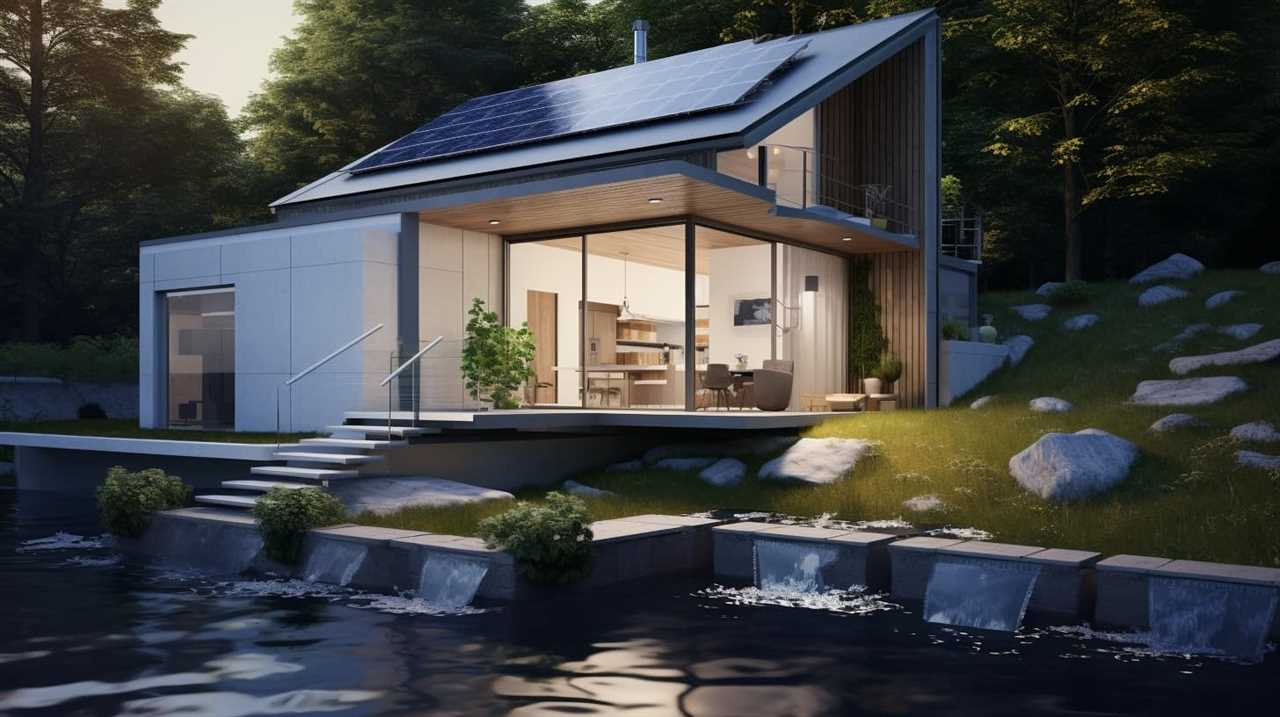
Additionally, consider these non-toxic alternatives to chemical solutions for pest control:
-
Neem oil: Derived from the neem tree, neem oil is a natural insecticide that can be effective against a wide range of pests. It works by disrupting the insect’s life cycle and repelling them from plants.
-
Insecticidal soap: Made from potassium salts of fatty acids, insecticidal soap works by suffocating pests on contact. It’s safe to use on most plants and can be an effective solution against white bugs.
-
Diatomaceous earth: This powdery substance is made from fossilized remains of diatoms and acts as a desiccant, drying out and killing insects.
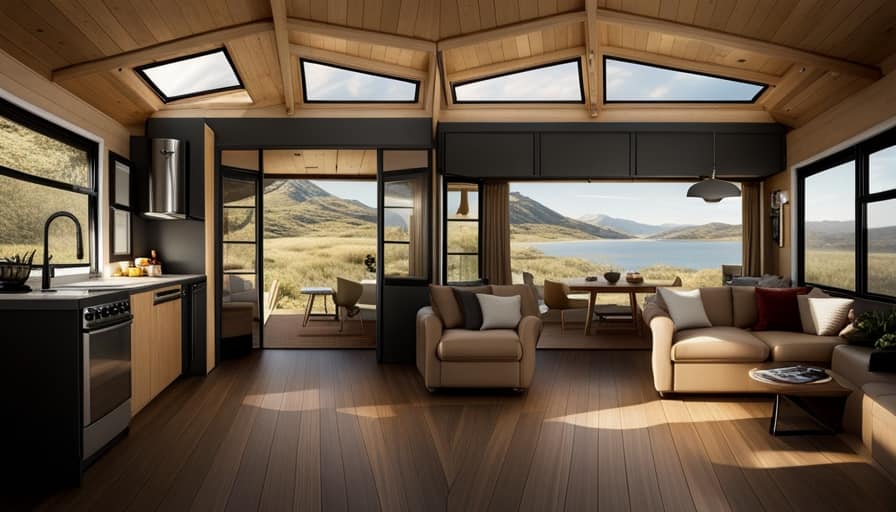
When using any chemical solution or non-toxic alternative, it’s essential to monitor the plants closely and repeat the treatment as necessary to maintain a bug-free environment. Professional pest control services can also provide expert guidance and assistance in achieving long-lasting results.
Preventing Future Infestations and Maintaining Healthy House Plants
To effectively prevent future infestations and maintain healthy house plants, I will implement a regular cleaning and inspection routine. This will help ensure that any signs of pests or diseases are detected early on and addressed promptly. Regularly cleaning the leaves and stems of my plants with a mild soap and water solution will help remove any dust or debris that can attract pests. Additionally, I will inspect the plants for any signs of infestation, such as white bugs or sticky residue on the leaves. To further enhance plant hygiene, I will also consider using beneficial insects, such as ladybugs or lacewings, which feed on common plant pests like aphids. By incorporating these practices into my routine, I can maintain healthy house plants and prevent future infestations.
| Regular Cleaning | Inspection Routine | Using Beneficial Insects |
| Remove dust and debris | Check for signs of infestation | Introduce ladybugs or lacewings to control pests |
| Promotes plant hygiene | Detect and address issues early | Natural pest control method |
| Prevents pest attraction | Maintain healthy house plants | Encourages ecosystem balance |
Frequently Asked Questions
Can These Tiny White Bugs Harm Humans?
Yes, tiny white bugs on house plants can harm humans. They can cause skin irritations and allergic reactions. It’s important to take steps to prevent infestations, such as regularly inspecting and cleaning your plants.
How Long Does It Take for Natural Remedies to Eliminate the Bugs Completely?
To completely eliminate the tiny white bugs using natural remedies, it typically takes a few weeks of consistent application. However, the effectiveness of these remedies can vary. It’s important to avoid common mistakes like under-applying or using incorrect remedies.
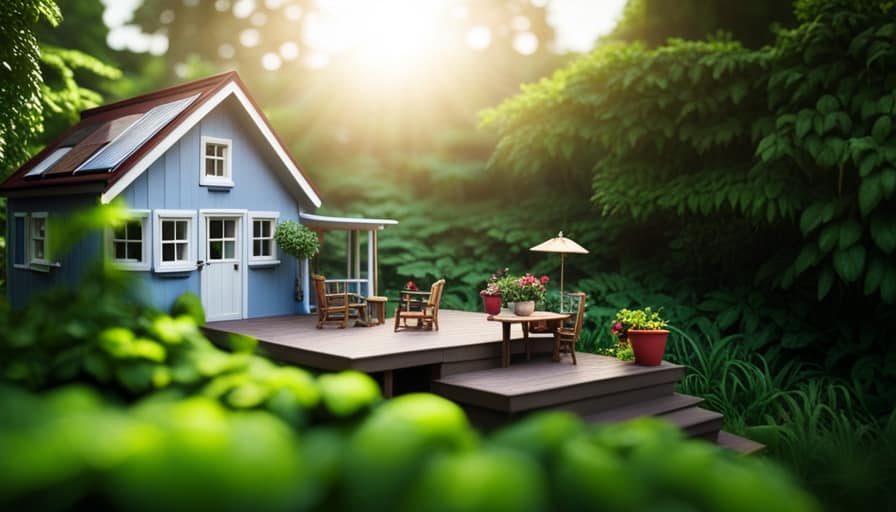
Are There Any Specific Types of House Plants That Are More Prone to Infestations?
Certain house plants, like lavender and marigolds, have natural repellent properties that can help prevent infestations. It’s important to choose plants that are known to repel bugs and to regularly inspect and clean your plants to avoid any potential infestations.
Can These Bugs Spread From One House Plant to Another?
Oh, the joy of tiny white bugs on house plants! Yes, these pests can spread from one plant to another. To control them, use insecticides and watch out for signs of infestation like sticky residue or wilting leaves.
How Often Should I Check My House Plants for Signs of Infestation?
I check my house plants for signs of infestation regularly to ensure their health. Common signs include tiny white bugs and yellowing leaves. Preventative measures like proper watering and cleaning can help keep plants bug-free.
Conclusion
In conclusion, taking care of our house plants goes beyond watering and sunlight. Identifying and eliminating tiny white bugs is a crucial part of maintaining a healthy environment for our plants.
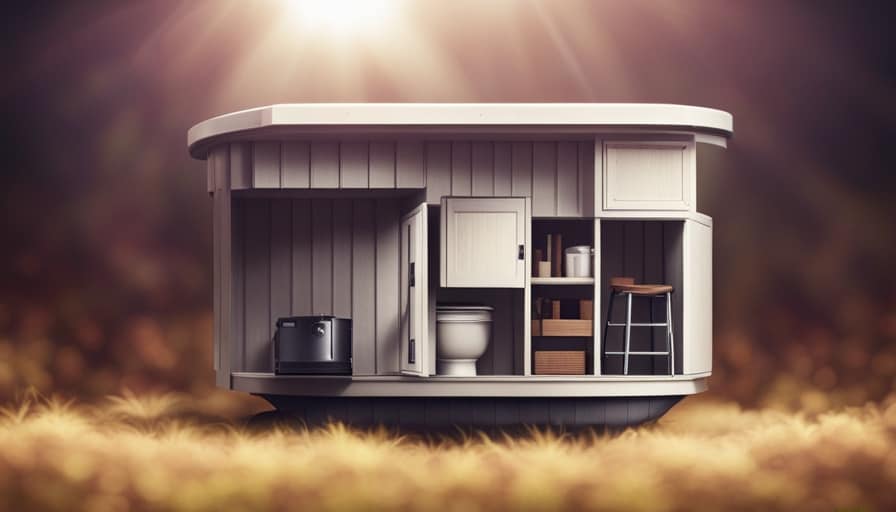
By understanding the causes of infestation and using natural or chemical remedies, we can ensure a bug-free environment. Remember, prevention is key, so regularly inspect your plants and take necessary measures to keep them thriving.
Happy gardening!
I’m Theodore, and I love tiny houses. In fact, I’m the author of Tiny House 43, a book about tiny houses that are also tree houses. I think they’re magical places where imaginations can run wild and adventures are just waiting to happen.
While tree houses are often associated with childhood, they can be the perfect adult retreat. They offer a cozy space to relax and unwind, surrounded by nature. And since they’re typically built on stilts or raised platforms, they offer stunning views that traditional homes simply can’t match.
If you’re looking for a unique and romantic getaway, a tree house tiny house might just be the perfect option.
Beginners Guides
How Do I Get Rid of Tiny Moths in My House

I have experienced the frustration of dealing with tiny moths flying around my food in the kitchen. But do not worry, I have a solution for you.
In this article, I’ll show you how to banish those pesky moths from your house for good. We’ll dive into identifying different moth species, understanding what attracts them, and simple prevention techniques you can implement.
Plus, I’ll share some natural remedies and professional options as a last resort. Say goodbye to those unwanted guests!
Key Takeaways
- Identifying the specific moth species is crucial for implementing targeted control measures.
- Moths are attracted to food sources, fabrics, and organic materials, so it’s important to store food in airtight containers and keep the house clean.
- Moths prefer dark, undisturbed areas to lay their eggs, so sealing cracks and openings in walls, windows, and doors can help prevent infestation.
- If natural remedies and DIY methods fail, it is advisable to seek professional pest control services for thorough inspection and tailored treatment plans.
Identifying the Culprits: What Type of Moth Is Invading Your Home
I can’t figure out what kind of moth is infesting my home. It’s frustrating not knowing the exact species, as different moths have different behaviors and habits. Identifying the culprits is crucial in order to effectively address the problem.
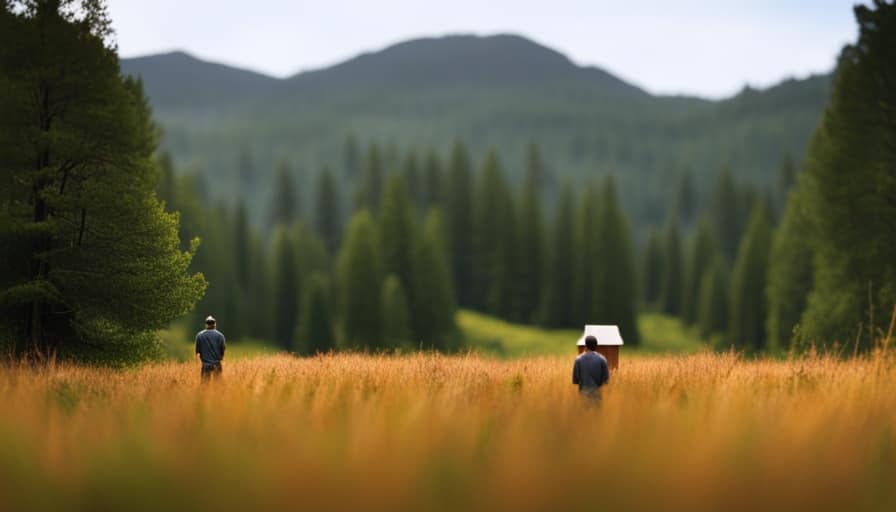
There are several common moth species that are known to invade homes, such as the Indian mealmoth, clothes moth, and pantry moth. Each species has distinct characteristics that can help with identification. Understanding their behavior is also important as it can give insights into their lifecycle and potential sources of infestation.
Moths are attracted to food sources, fabrics, and other organic materials. They can lay eggs in stored grains, textiles, or even pet food. By understanding the specific species and their behavior, it becomes easier to implement targeted control measures and prevent further infestations.
Understanding the Infestation: Why Are Moths Attracted to Your House
To effectively address the infestation, it’s essential to understand why moths are attracted to your house. Here are four reasons why moths may be flocking to your home:
-
Food sources: Moths are attracted to food, especially grains, cereals, and dried fruits. They can easily find their way into your pantry and feast on these items.
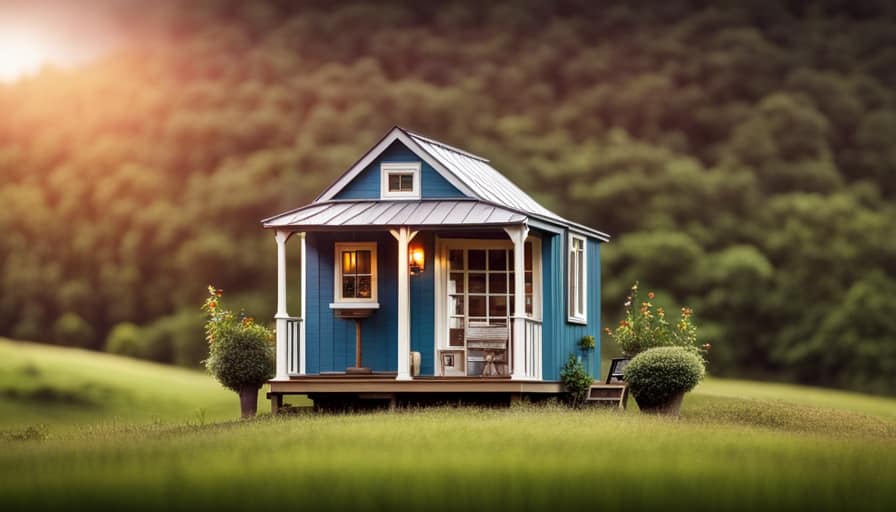
-
Moisture and humidity: Moths thrive in damp environments, making your house an ideal breeding ground if there are areas with high humidity or water leaks.
-
Suitable habitat: Moths are drawn to dark, undisturbed areas where they can lay their eggs undisturbed. This includes closets, attics, and basements.
-
Outdoor attraction: Moths can be attracted to your house from the outside, especially if you have outdoor lights that are left on at night.
Understanding moth behavior and their attraction to your house is crucial in preventing further infestation. By addressing these factors, you can take steps to keep moths at bay and protect your home.

Here are some moth prevention tips:
- Store food in airtight containers.
- Keep your house clean and free of crumbs or spills.
- Fix any leaks or moisture issues promptly.
- Use moth repellents or traps in vulnerable areas.
Prevention Is Key: Simple Steps to Keep Moths From Entering Your Home
Prevention is essential, so I’ll share some simple steps to keep moths from entering your home. By taking a proactive approach, you can create an inhospitable environment for moths and minimize the risk of infestations. One effective method is to use moth repellent products, such as sachets or sprays, in areas where moths are commonly found. These repellents contain chemicals that deter moths from entering your home. Additionally, it is crucial to seal any cracks or openings in your walls, windows, and doors. Moths can easily slip through these tiny gaps, so using caulk or weatherstripping can help keep them out. Regularly vacuuming and cleaning your home can also eliminate moth eggs or larvae that may be hiding in carpets or corners. By implementing these preventive measures, you can ensure a moth-free home environment.
| Steps to Keep Moths Away | |
|---|---|
| Use moth repellent products | Seal cracks and openings |
| Regularly vacuum and clean |
Natural Remedies: Non-Toxic Solutions to Get Rid of Moths
One effective way to get rid of moths naturally is by using a combination of vinegar and water to create a non-toxic moth spray. Here are some natural remedies you can try:
-
Vinegar and water spray: Mix equal parts vinegar and water in a spray bottle. Spray this solution on areas where moths are present, such as closets, drawers, and pantry shelves. The strong odor of vinegar repels moths and prevents them from laying eggs.
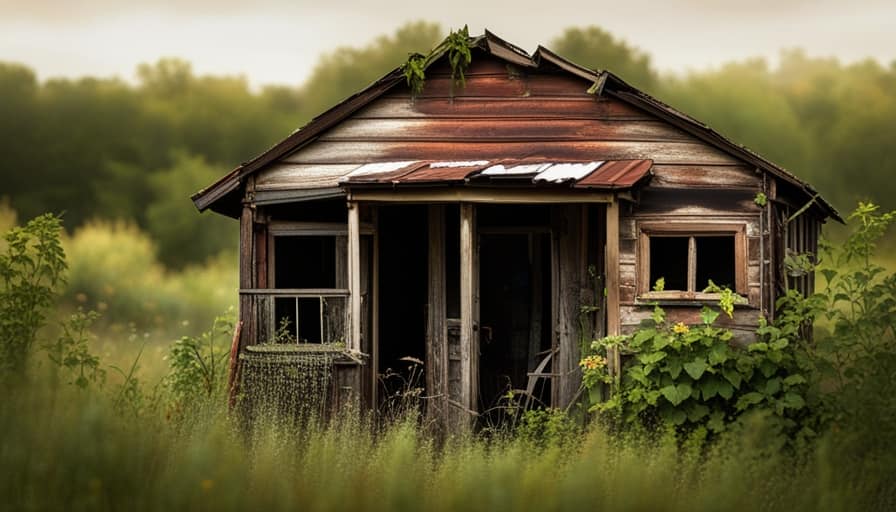
-
Cedar chips: Moths dislike the smell of cedar, so placing cedar chips in your closets and drawers can help deter them. You can also use cedar oil or cedar sachets for the same effect.
-
Homemade traps: Create simple moth traps by placing a mixture of vinegar, sugar, and dish soap in a bowl. The sweet scent attracts moths, and the dish soap traps them when they try to land on the mixture.
-
Lavender sachets: Moths are repelled by the fragrance of lavender. Place dried lavender in small sachets and tuck them in your clothing drawers or hang them in your closets.
These natural repellents and homemade traps can help you get rid of moths without using toxic chemicals. However, if these methods fail to eliminate the infestation, it may be time to consider professional pest control options.
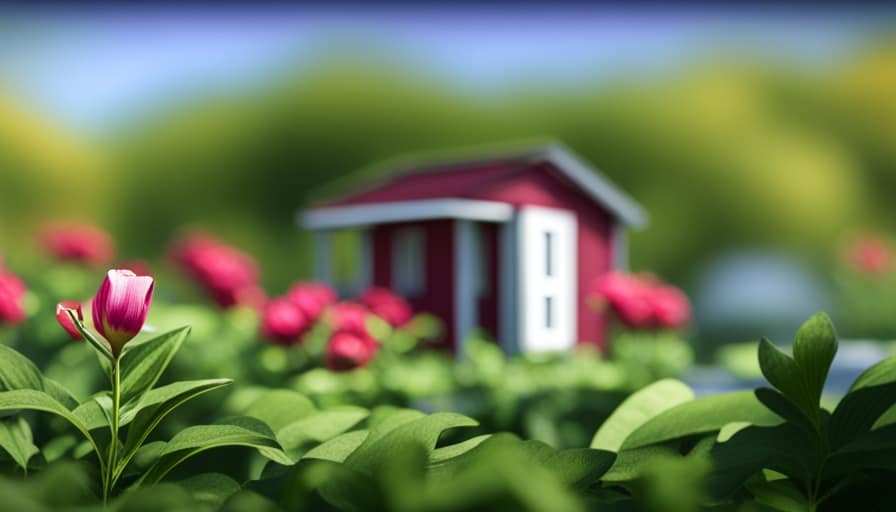
Last Resort: When All Else Fails, Professional Pest Control Options
If I’ve exhausted all other options, I’ll contact a professional pest control service to eliminate the moth infestation in my house. While natural remedies and DIY methods can be effective for small infestations, sometimes the problem persists or worsens despite our best efforts.
This is when it’s crucial to call in the experts. Professional pest control services have the knowledge, experience, and resources to effectively eradicate moth infestations. They’ll conduct a thorough inspection of your home to identify the source of the infestation and develop a tailored treatment plan.
The benefits of hiring professionals include their expertise in identifying different moth species, their access to specialized equipment and pesticides, and their ability to ensure the complete eradication of the infestation.
When all else fails, it’s best to rely on the expertise of professional pest control services to rid your home of those persistent moths.

Frequently Asked Questions
Can Moths Cause Any Damage to My House or Belongings?
Moths can cause damage to fabrics, carpets, and stored food. It’s important to address a moth infestation promptly. Using natural moth repellents, like lavender or cedar, can help deter them from your house and protect your belongings.
Are All Types of Moths Attracted to Homes, or Are There Specific Species That Are More Common?
In the world of moths, certain species have a penchant for our cozy homes. Understanding the types commonly found indoors can help us prevent the dreaded infestations from taking hold in the first place.
How Long Does It Usually Take to Get Rid of a Moth Infestation Using Natural Remedies?
Using natural remedies to get rid of a moth infestation can be effective, but the time it takes varies depending on the severity. Common signs of an infestation include sightings of adult moths and larvae, as well as damaged fabrics or food products.
Can Moths Carry Diseases or Pose a Health Risk to Humans?
Moths can transmit diseases to humans, so it’s important to take precautions. Individuals with allergies or asthma may experience respiratory issues due to moth infestations in homes.
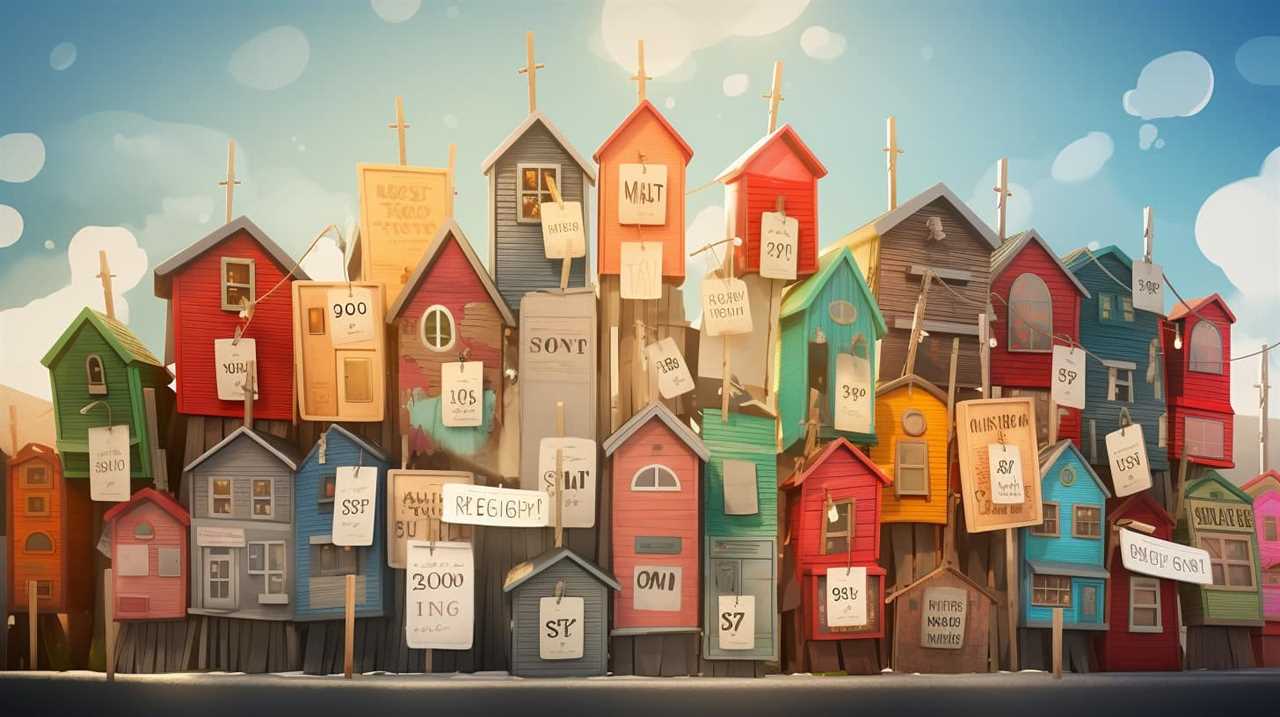
Are There Any Specific Plants or Herbs That Repel Moths and Can Be Used as Natural Remedies?
Using natural moth repellents, such as specific plants and herbs, offers several benefits over chemical alternatives. Creating a moth repelling garden with lavender, rosemary, and mint can effectively deter moths from your house.
Conclusion
In conclusion, it’s essential to address the presence of these minuscule pests in your home promptly. By identifying the specific type of moth invading your space and understanding their attraction, you can take preventive measures to keep them at bay.
Utilizing natural remedies and seeking professional pest control services as a last resort will ensure a moth-free environment without compromising your household’s well-being.
Stay vigilant and employ these effective methods to bid farewell to these unwelcome visitors.
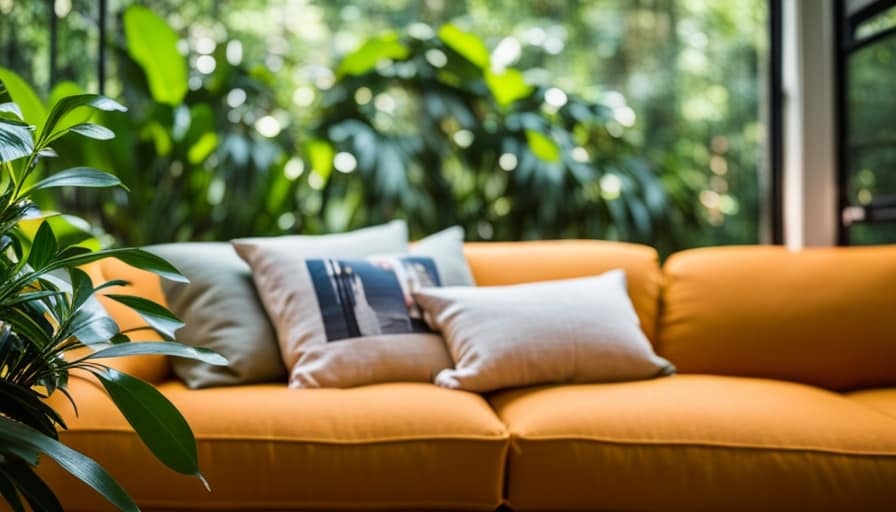
I’m Theodore, and I love tiny houses. In fact, I’m the author of Tiny House 43, a book about tiny houses that are also tree houses. I think they’re magical places where imaginations can run wild and adventures are just waiting to happen.
While tree houses are often associated with childhood, they can be the perfect adult retreat. They offer a cozy space to relax and unwind, surrounded by nature. And since they’re typically built on stilts or raised platforms, they offer stunning views that traditional homes simply can’t match.
If you’re looking for a unique and romantic getaway, a tree house tiny house might just be the perfect option.
Beginners Guides
How Difficult Is It to Build a Tiny House in Colorado Springs

I understand your concerns about building a tiny house in Colorado Springs. However, I can assure you that with the proper knowledge and guidance, it is completely achievable.
In this article, I’ll walk you through the zoning regulations, permitting process, finding suitable land, and navigating building codes. We’ll also discuss securing financing, budgeting, and dealing with utilities.
So, if you’re ready to embark on this rewarding journey, let’s dive in and make your tiny house dreams a reality.
Key Takeaways
- Zoning regulations and building permits are required for constructing a tiny house in Colorado Springs.
- Finding suitable land that complies with zoning regulations is important for placing a tiny house.
- Familiarizing oneself with local building codes and regulations, and following safety guidelines is necessary.
- Researching various financing options and presenting a detailed budget can increase the chances of securing financing for building a tiny house.
Zoning Regulations and Permitting Process
I’ll need to research the zoning regulations and permitting process before starting to build my tiny house in Colorado Springs. Understanding these regulations is crucial as they dictate where and how I can construct my tiny house.
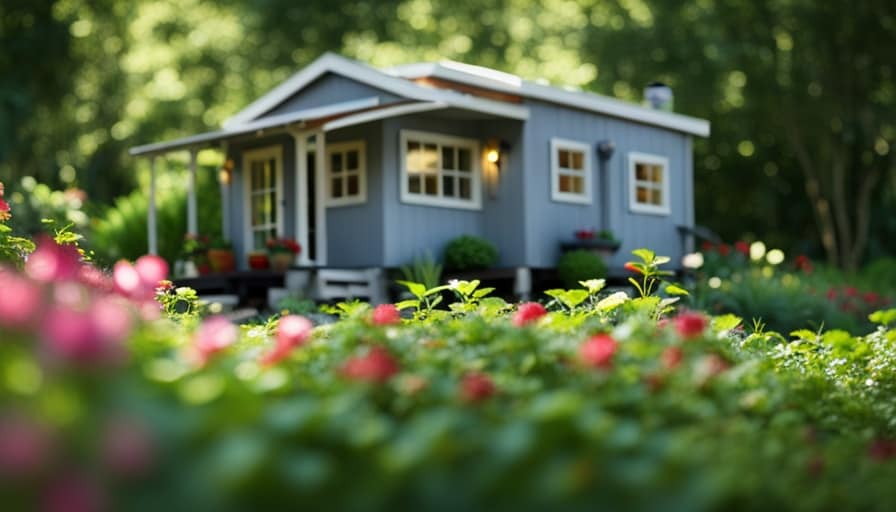
One key aspect to consider is the impact of tiny houses on property values. While some argue that they can decrease property values, others believe that they can actually increase them by adding diversity and uniqueness to the community.
Additionally, one of the challenges I may face is finding legal parking for my tiny house in urban areas. Many cities have restrictions on where tiny houses can be parked, making it essential to find suitable parking options that comply with local regulations.
With these factors in mind, I can now move on to finding suitable land for my tiny house.
Finding Suitable Land for Your Tiny House
After researching the zoning regulations and permitting process, it’s now time to start finding suitable land for my tiny house in Colorado Springs.
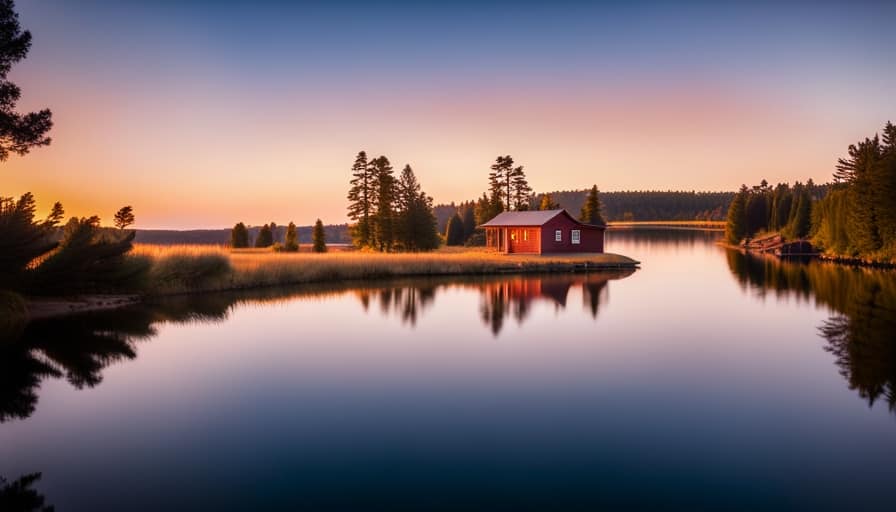
When it comes to finding land for a tiny house, there are a few important factors to consider. One of the major challenges is land availability constraints. Due to the increasing popularity of tiny houses, finding land that allows for their construction can be difficult. It’s important to do thorough research and explore different options, such as contacting local real estate agents or checking online platforms that specialize in tiny house-friendly land.
Additionally, environmental impact considerations are crucial. It’s important to choose a location that minimizes the impact on the surrounding environment and aligns with sustainable practices.
Taking these factors into account will ensure that I find a suitable piece of land for my tiny house in Colorado Springs.
Navigating Building Codes and Inspections
When it comes to navigating building codes and inspections for my tiny house in Colorado Springs, I’ll need to familiarize myself with the local regulations and ensure compliance throughout the construction process. Understanding local regulations is crucial to avoid any legal issues and ensure that my tiny house meets all the necessary requirements.
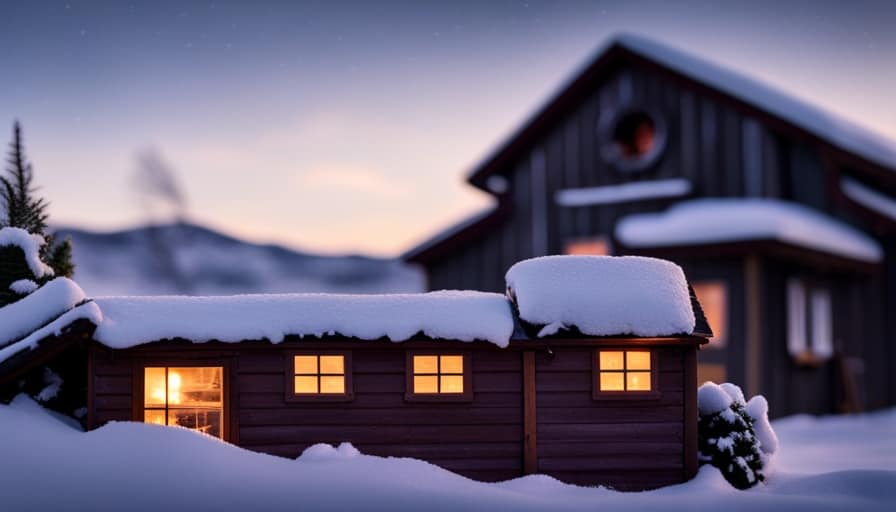
This includes obtaining proper permits, adhering to zoning laws, and following safety guidelines. To ensure a smooth process, I may consider hiring a professional builder who’s well-versed in local building codes and has experience with tiny house construction. Their expertise and knowledge will help me navigate the intricacies of the regulations and ensure that my tiny house is built according to the highest standards.
By understanding the local regulations and working with a professional builder, I can confidently proceed with my project while complying with all necessary codes and inspections.
With the building codes and inspections in mind, the next step is to secure financing and budget for my tiny house project.
Securing Financing and Budgeting for Your Project
To successfully secure financing and budget for my tiny house project in Colorado Springs, I frequently need to research various lenders and explore different funding options. Securing loans for a tiny house can be challenging, as it’s a unique type of project and not all lenders may be familiar with it. However, there are lenders who specialize in providing loans specifically for tiny houses.
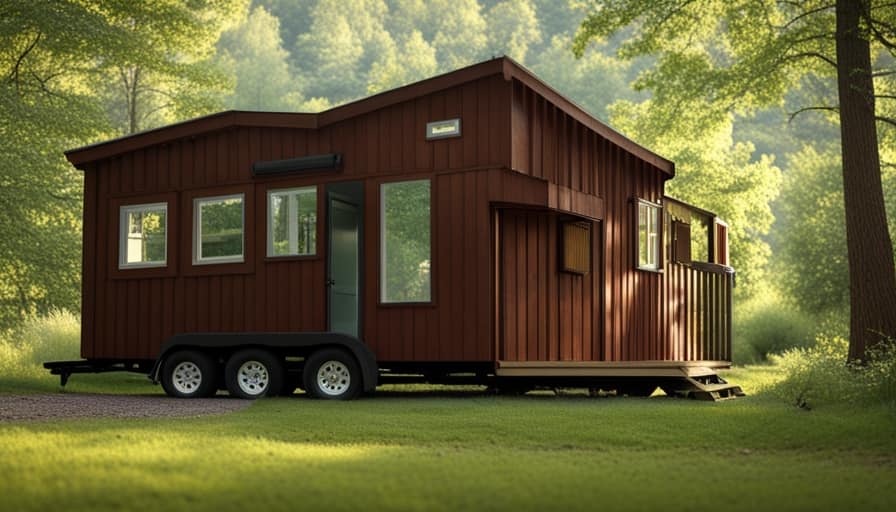
It’s important to gather all the necessary documents and information required by the lenders, such as the cost estimation of the project, including materials, labor, and any additional expenses. By presenting a thorough and well-prepared budget, it increases the chances of securing financing for the project.
Once the financing is secured, it becomes easier to move forward with the next steps of the project, such as dealing with utilities and exploring off-grid options.
Dealing With Utilities and Off-Grid Options
I can explore both traditional utility options and off-grid alternatives when dealing with electricity, water, and sewage in my tiny house in Colorado Springs.
When it comes to off-grid power, there are several options available. Solar panels are a popular choice, harnessing the energy of the sun to generate electricity. Wind turbines can also be used to generate power, particularly in areas with consistent wind patterns. Additionally, hydroelectric power can be harnessed if there’s a suitable water source nearby.
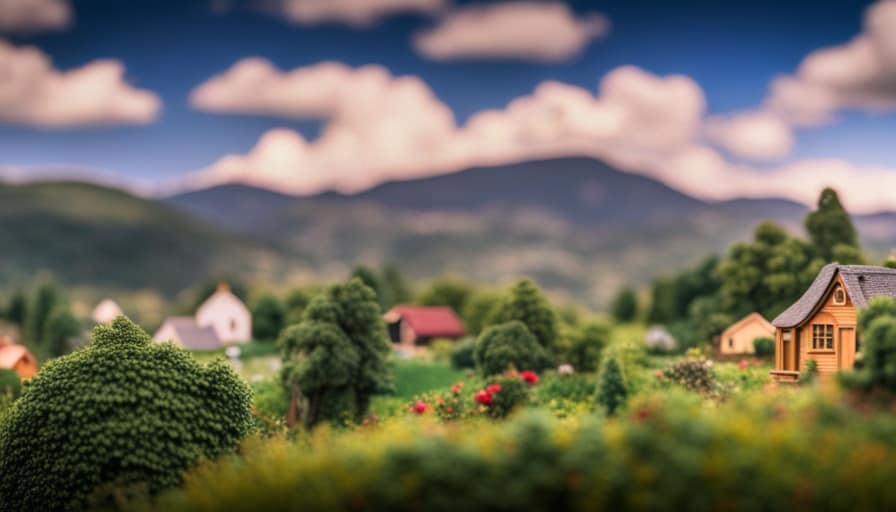
As for water sources, rainwater collection systems can be installed to capture and store rainwater for household use. Digging a well is another option, although it may require permits and additional expenses.
Lastly, composting toilets can be used to manage sewage in an off-grid tiny house, eliminating the need for traditional plumbing systems.
Frequently Asked Questions
What Are the Advantages of Building a Tiny House in Colorado Springs Compared to Other Cities in Colorado?
Building a tiny house in Colorado Springs has many advantages compared to other cities in Colorado. The city has a thriving tiny house community, supportive regulations, and an abundance of natural beauty to enjoy.
Are There Any Specific Design Requirements for Tiny Houses in Colorado Springs?
There are specific design requirements for tiny houses in Colorado Springs, including building regulations that must be followed. It is important to be knowledgeable about these requirements to ensure a successful and compliant build.

How Long Does the Zoning and Permitting Process Usually Take in Colorado Springs?
The zoning and permitting process in Colorado Springs can be a challenge. It takes time to navigate through the requirements and obtain the necessary approvals. However, with proper guidance and patience, it is possible to build a tiny house in Colorado Springs.
Are There Any Restrictions on Living in a Tiny House on Wheels in Colorado Springs?
Living in a tiny house on wheels in Colorado Springs comes with restrictions. Tiny house parking options are limited, and building codes for tiny houses must be followed. It can be challenging, but not impossible.
Can I Rent Out My Tiny House as an Airbnb in Colorado Springs?
Renting out a tiny house as an Airbnb in Colorado Springs is possible, but there are regulations to follow. It’s important to familiarize yourself with local zoning laws and obtain any necessary permits before listing your tiny house as a rental property.
Conclusion
Building a tiny house in Colorado Springs may be challenging due to zoning regulations, finding suitable land, navigating building codes, securing financing, and dealing with utilities.
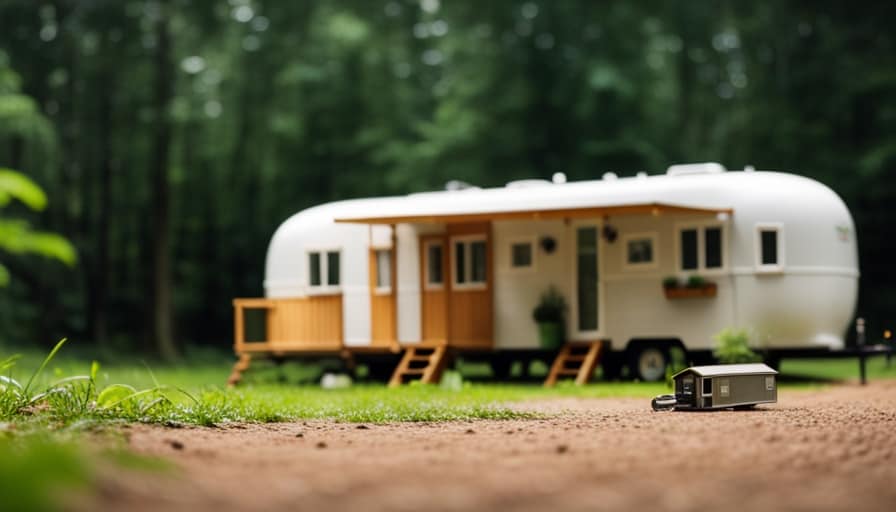
However, with determination and thorough research, it’s possible to overcome these obstacles.
For example, Sarah, a Colorado Springs resident, successfully built her own off-grid tiny house by carefully selecting land outside city limits, obtaining the necessary permits, and utilizing solar power.
Her experience demonstrates that with proper planning and knowledge, building a tiny house in Colorado Springs can be a rewarding and sustainable endeavor.
I’m Theodore, and I love tiny houses. In fact, I’m the author of Tiny House 43, a book about tiny houses that are also tree houses. I think they’re magical places where imaginations can run wild and adventures are just waiting to happen.
While tree houses are often associated with childhood, they can be the perfect adult retreat. They offer a cozy space to relax and unwind, surrounded by nature. And since they’re typically built on stilts or raised platforms, they offer stunning views that traditional homes simply can’t match.
If you’re looking for a unique and romantic getaway, a tree house tiny house might just be the perfect option.
-

 Beginners Guides2 weeks ago
Beginners Guides2 weeks agoHow To Buy A Tesla Tiny House
-

 Energy Efficiency2 months ago
Energy Efficiency2 months agoBest Tiny Homes For Cold Climates
-

 Beginners Guides1 week ago
Beginners Guides1 week agoTiny House Nation Where Are They Now Stephanie
-

 Tiny House Resources (e.g., legalities, cost, insurance, FAQs)2 months ago
Tiny House Resources (e.g., legalities, cost, insurance, FAQs)2 months agoDo Tiny Homes Need Planning Permission?
-

 Beginners Guides3 weeks ago
Beginners Guides3 weeks agoFrom The Show Tiny House Nation How Many Keep Their Tiny House?
-

 Beginners Guides2 months ago
Beginners Guides2 months agoUsing a Climbing Net For Treehouse Construction
-

 Beginners Guides2 months ago
Beginners Guides2 months agoHow to Build a Treehouse Without Drilling Into the Tree
-

 Beginners Guides3 weeks ago
Beginners Guides3 weeks agoTiny House Nation Who Pays For The Houses













